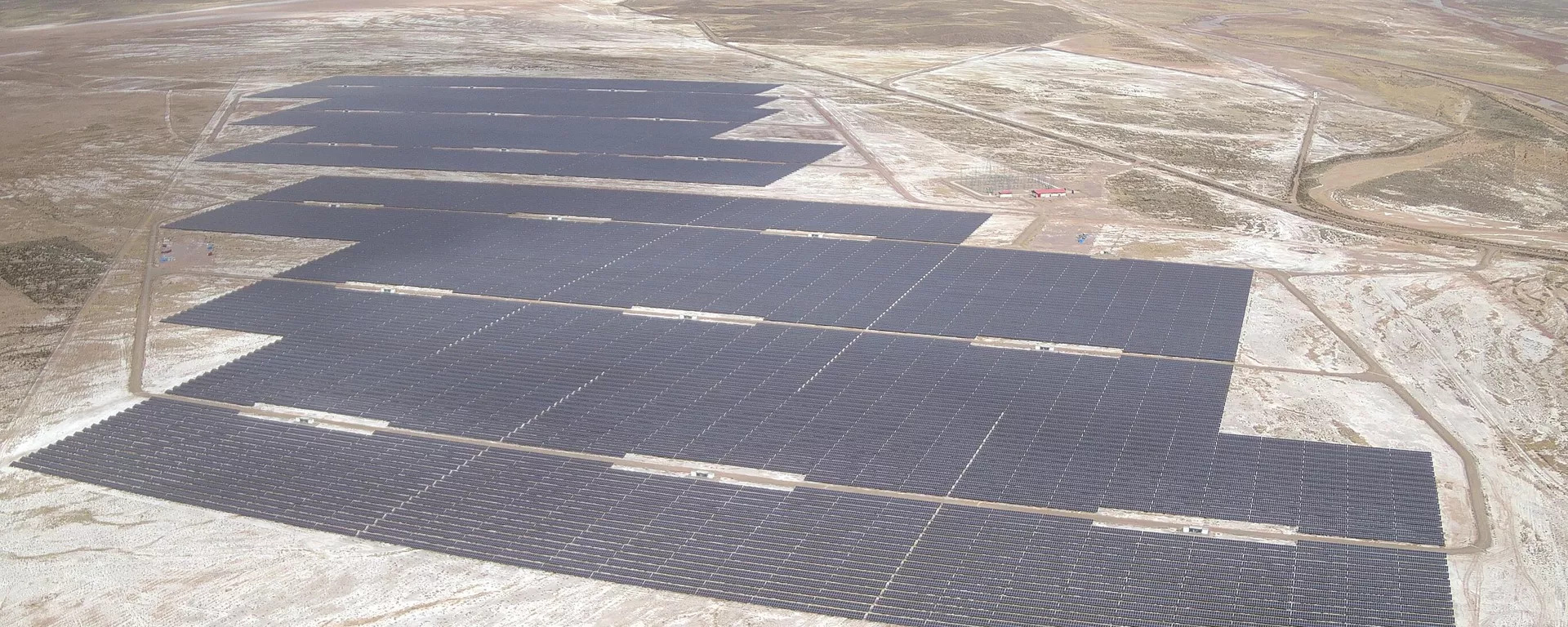The government of Luis Arce is reducing the use of fossil fuels by developing energy sources such as wind, solar and hydroelectric power.
In this way, the country has a greater volume of gas for export and fulfills its commitments to the UN.
Luis Arce’s government has promoted using renewable energy sources such as hydropower, wind power, solar energy, and biomass as part of the national energy transition strategy, the Ministry of Hydrocarbons and Energy (MHE) told Sputnik.
To meet Bolivia’s electricity needs with gas alone would require seven million cubic meters per day (MMmcd).

The government has halved gas consumption for electricity generation through investments in renewable energy, according to MHE, and has made progress in its quest to leave fossil fuels behind.
In an MHE report, the minister in charge, Franklin Molina, asserts that there is “an installed capacity of 1,161 MW of clean and environmentally friendly energy” in Bolivia.
Wind and solar energy have also boomed under the current government.
In early 2021, Arce inaugurated Bolivia’s largest solar farm in Oruro, construction of which began during Evo Morales’ term in office (2006-2019).
And in regions of the department of Santa Cruz (east), the government has installed dozens of wind turbines to take advantage of the strong winds.
According to official data, the following renewable energies are generated: 165 MW of solar energy, 135 MW of wind energy, 127 MW of biomass energy, and 734 MW of hydroelectric power.
FOSSIL FUEL SAVINGS
The MHE forecasts that 75% of electricity will come from renewable sources in three years.
“Bolivia currently has an installed capacity of 3,822 MW, of which 1,161 MW comes from renewable sources.
The government has new renewable power generation projects on its agenda, and projects using gas are not foreseen,” the Vice-Ministry of Electricity and Alternative Energies told Sputnik.
“This agenda will allow us to further reduce the use of fossil fuels in electricity generation,” the vice ministry said.
The surplus electricity that is not needed in Bolivia will be exported to Argentina, Peru, Chile, and Brazil, according to the ministry.
Changing the energy matrix is a constitutional mandate and an obligation to the countries of the United Nations, the MHE said.
Under a constitutional mandate, Bolivia has changed its fossil fuel consumption habits to minimize greenhouse gas emissions responsible for global warming.
This coming November, COP27 will be held in Egypt. This annual meeting of the UNFCCC will discuss measures to ensure the preservation of life despite the rise in global temperatures caused by industrial activities, especially in the northern hemisphere.
The change in the energy matrix is not only due to legal and international obligations, but also brings economic benefits to the country.
Bolivia currently produces 44 million cubic meters of gas daily, requiring 12 MMmcd per day to function.
Almost all of the rest is exported to Brazil and Argentina.
The state spends US$1.5 billion a year subsidizing hydrocarbons, which is a drain on the national budget, so not using gas to generate electricity is another benefit.
In cities not connected to the SIN, power is generated by engines that run on gasoline or diesel. For this reason, “the government is making efforts to reach these regions with the SIN that uses renewable sources,” the ministry said.
“This makes it possible to stop using this fuel to generate electricity, thus reducing the amount of diesel used to generate electricity,” it said.
With information from Sputnik

